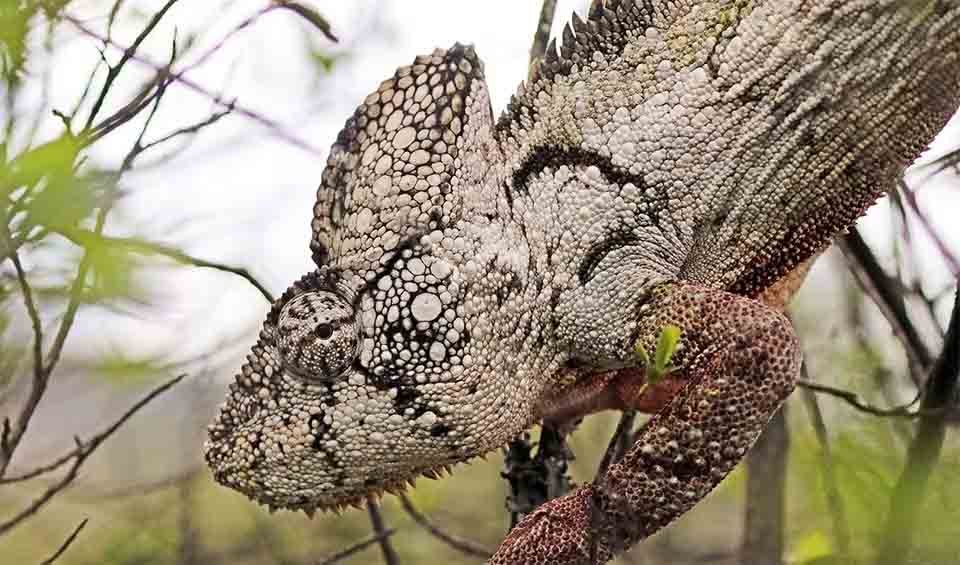It is one of the largest chameleon species in the world and is endemic to the island of Madagascar. This remarkable reptile is a master of camouflage and energy conservation, spending long periods virtually motionless as it waits for prey or seeks to avoid detection by predators.
With the ability to grow up to 68 centimeters (27 inches) in length, the Malagasy giant chameleon is an impressive sight. Its slow and deliberate movements are not just a method of conserving energy; they also help the chameleon to blend into its surroundings, making it nearly invisible within its natural habitat of arboreal forests. These reptiles are found in a variety of forest types across Madagascar, from rainforests to savanna woodlands, demonstrating their adaptability to different environments.
One of the most unusual features of the Malagasy giant chameleon is the presence of a parietal eye, often called the “third eye,” located on the top of its skull. This is not an eye in the traditional sense, as it does not form images, but it is sensitive to light and dark and is thought to help regulate the chameleon’s circadian rhythms and thermoregulation.
The diet of the Malagasy giant chameleon mainly consists of insects and other invertebrates. It uses its exceptionally long, sticky tongue, which it can project rapidly, to capture prey from a distance. In some cases, the tongue can extend more than twice the body length, allowing the chameleon to strike from a considerable distance with remarkable accuracy.
Despite its size and predatory efficiency, the Malagasy giant chameleon is threatened by habitat loss. Although it is considered to be adaptable and can survive in secondary forests and plantations, deforestation and habitat fragmentation pose significant risks. This is especially true in Madagascar, where a high rate of deforestation has put many native species at risk.
Distribution
 Madagascar
MadagascarAnything we've missed?
Help us improve this page by suggesting edits. Glory never dies!
Suggest an editGet to know me
Terrestrial / Aquatic
Altricial / Precocial
Polygamous / Monogamous
Dimorphic (size) / Monomorphic
Active: Diurnal / Nocturnal
Social behavior: Solitary / Pack / Herd
Diet: Carnivore / Herbivore / Omnivore / Piscivorous / Insectivore
Migratory: Yes / No
Domesticated: Yes / No
Dangerous: Yes / No





